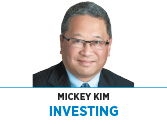Subscriber Benefit
As a subscriber you can listen to articles at work, in the car, or while you work out. Subscribe Now The following is an excerpt from Kirr Marbach & Co.’s fourth-quarter client letter, available at www.kirrmar.com.
The following is an excerpt from Kirr Marbach & Co.’s fourth-quarter client letter, available at www.kirrmar.com.
Last year was extraordinarily painful, but it highlighted two timeless investing truths.
Stocks are inherently volatile, so stay calm, stay in and stay the course.
From Feb. 19 to March 23 (23 trading days), the S&P 500 suffered its most rapid meltdown in history, dropping a nauseating 33.9%.
Of the 21 trading days from Feb. 27 to March 27, 18 of them saw moves in the S&P 500 of more than 2%–11 down and seven up. They included the second-biggest percentage loss since 1940 (-12.0% on March 16, trailing only the -20.5% loss on “Black Monday,” Oct. 19, 1987), but also the biggest daily percentage gain since 1933 (9.4% on March 24). In fact, the March 24-26 17.6% surge in the S&P 500 was the biggest three-day advance in more than 80 years.
In other words, the first quarter of 2020 saw both the most rapid meltdown in history and the biggest three-day advance in more than 80 years!
◗ Stay calm. Extreme volatility is perfectly normal.
From 1980 to 2020, the S&P 500 experienced an average intra-year drop of 14.3% (peak-to-trough) yet had a positive return in 31 of 41 calendar years.
◗ Stay in. It would have been easy to have been scared out of the market on March 23, but then you would have missed the ensuing 17.6% recovery that happened over the next three days.
According to Fidelity, $10,000 invested in the S&P 500 on Jan. 1, 1980, would have grown to $952,512 by Aug. 31, 2020. However, an investor who missed just 10 of the best-performing days in those 40 years (more than 10,000 trading days) would have lost out on more than half the gains (growing instead to only $425,369).
Staying invested is very difficult during a violent downdraft, but missed upside can dramatically cut into long-term returns. As pugilist Mike Tyson famously said, “Everyone has a plan until they get punched in the mouth.”
◗ Stay the course. For long-term investors, time is on your side, and time in the market is more important than timing the market. According to Crandall Pierce, for rolling periods from January 1950 to December 2020, one-year returns for the S&P 500 were positive 79% of the time (range of -43.3% to 61.2%), five-year returns were positive 92% of the time (-6.6% to 29.6%), and 10-year returns were positive 97% of the time (-3.4% to 19.5%).
Forecasts are worthless.
We don’t attempt to forecast the economy or markets. No matter how much we wish, no one can predict the market. No one will know when to go to cash and when to go all in. Like a broken clock, forecasts can sometimes be correct, but they lack persistence. Anyone who tells you differently is not being truthful.
Our non-forecast for 2021 is both persistent and reliable because it is based on how we feel and temptations we face as investors. Not only are these more predictable than market outcomes, they are also more important to investor well-being.
While we cannot control volatility, we can control how we behave and respond to market outcomes. Financial markets are only one side of the investing equation; the other side is the choices you make. We think it’s best to focus on the part we have control over. Additionally, understanding what we might face can help us improve our decision-making process:
◗ The economy/market will do something that surprises us.
◗ Investors who watch the market often will experience more stress than those who don’t.
◗ You will be tempted to abandon your plan at some point based on expert forecasts and/or short-term market performance.
◗ Investors who focus on things they can control will have a better investment experience than those who focus on what they can neither control nor predict.
◗ Dangers, known and unknown, lurk everywhere and can appear at any time.
◗ Investing with your gut or feelings will result in lower returns and higher stress than if you remain disciplined to your financial plan.
◗ Not looking, aka “strategic ignorance,” will result in less stress and greater personal enjoyment than watching the market.
Successful investing is simple but not easy. Patience and discipline are virtues because they aren’t easy, yet they are essential for your success.•
__________
Kim is Kirr Marbach & Co.’s chief operating officer and chief compliance officer. He can be reached at 812-376-9444 or [email protected].
Please enable JavaScript to view this content.
